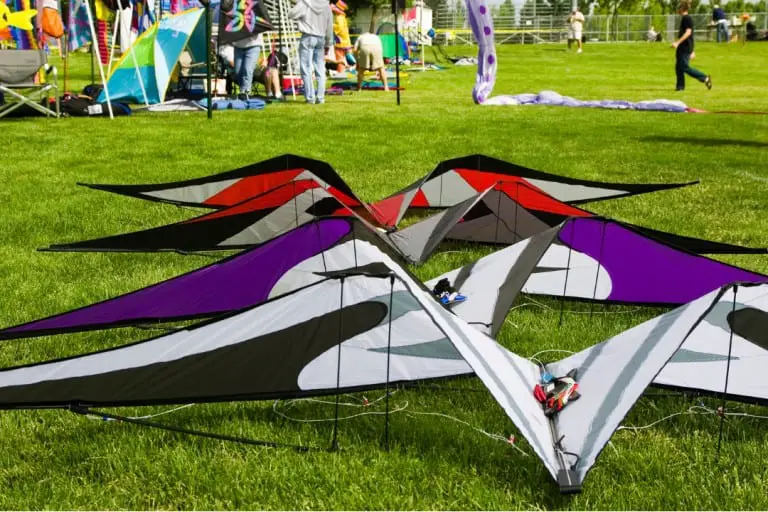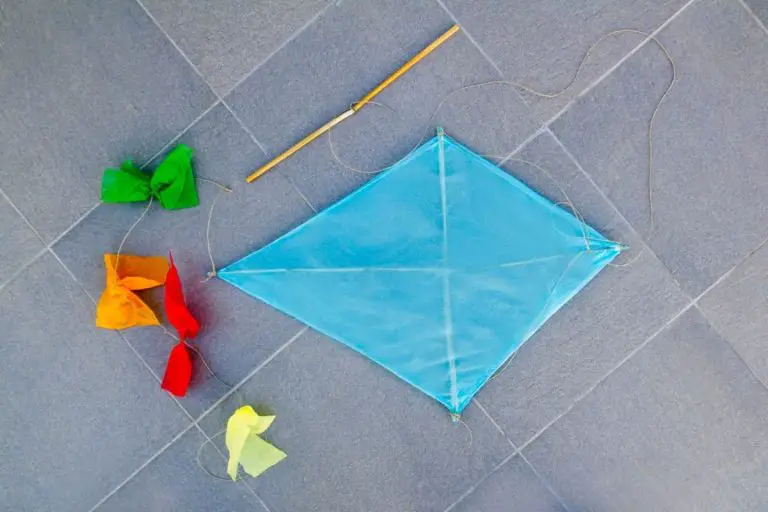The Rules Of Kite Fighting
Are you interested in kite fighting? Perhaps you’re a kite enthusiast wanting to know the rules of kite fighting. Then you’re in luck because this article will give you a rundown of the general rules of kite fighting.
The rules of kite fighting include specific competition rules and general rules encompassing the importance of safety and sportsmanship, observance of wind rule and line length, compliance to allowed equipment, and due penalties or disqualifications.
Kite fighting is a popular sports activity in Asia and many countries. Kite flying, in general, is already a well-loved activity across the world, but kite fighting takes the excitement and the challenge to a whole new level. Stick around to know more about what are the rules of kite fighting.
Kite Fighting General Rules
Kite fighting comes in several events, including line touch matches, skills/precision contests, ballet, cutting line contests, and Rokkaku battles. Each kite fighting event has its own set of dedicated rules and guidelines.
Still, the American Kitefliers Association and the Manjha Team International have specified some general and specific competition rules for kite fighting.
1. Importance Of Safety And Sportsmanship
Like with all sports, you should uphold safety and sportsmanship with utmost priority. The head judge will appoint safety marshals for kite fighting to ensure that the flying area is clear of spectators and other kites. If there are any safety concerns, the head judge may call a halt to the competition. (source)
To abide by the rules in kite fighting, the contestants must behave in a safe, sportsmanlike way. They must not interfere with the competition in any manner, either purposefully or inadvertently endangering the safety of other competitors or spectators’ safety or attempting to sway the Judges.
The Event Coordinator or Head Judge has the authority to disqualify contestants behaving in a dangerous or disruptive manner.
2. Observance Of Wind Rule and Line Length
In unfavorable wind conditions and safety concerns, the head judge has the right to stop or cancel heats, rounds, or entire competitions. The Head Judge may increase or reduce the maximum line length depending on the wind and flying circumstances. (source)
Line lengths will find specific rules relating to field borders and safety considerations. The participants will all start with the same line limitations.
In the middle of a competition, participants will not modify the maximum line length or the starting line length. In those events where match winners advance, participants can alter line lengths between “levels.
3. Compliance To Allowed Equipment
All kites constructed of natural materials are permitted to compete, regardless of their size or form, as long as the kite is clearly visible in the sky. The judge has the authority to request that the kite be made more visible. If the player violates this regulation two more times, they will face disqualification. (source)
Natural fibers such as cotton, flax, and silk are the only cutting lines permitted, but a P.V.C. cutting line is seldom prohibited. Non-compliance with this regulation will result in total disqualification. The cutting line’s strength can be as high as 50 meters, and there is no maximum limit.
Using any other energy such as thermic engines or electricity to fly a kite and move the line is prohibited as competitors must only utilize human energy. The use of kite tails in cutting lines is also prohibited. (source)
4. Due Penalties And Disqualifications
A contestant will be penalized or face possible disqualification if they conduct any of the following violations: (source)
- Flying over the specified outer boundary 15 minutes before the scheduled start of the event or discipline will result in disqualification
- If and when any part of the contestant’s body moves outside the outer boundary during the competition proper will result in disqualification
- Unsafe flying will penalize a competitor, but wilful dangerous flight, as assessed by the chief judge, will result in disqualification
Kite Fighting Competition Rules
The Manjha Team International presents specific rules not stated in the general rules for kite fighting as competition rules for international kite fighting. To know what are the competition rules of kite fighting, let’s look at the list below. (source)
1. The Winner And The Loser
The one who cuts their competitor is declared the winner. A fight’s winner receives 1 point, while the loser gets 0 points. There is no such thing as a dead fight.
2. The Judges
A judge and a second judge oversee the events, designated as the organization’s head. Fights adjudication occurs by one or more judges chosen by the chief judge. The judges of the pools have the authority to stop the battles if necessary.
3. Decision Disagreements And Disputes
If there is a disagreement with a decision or a fact, the judges will stop the fight. Fights can continue after participants and judges reach a broad consensus. The judge and the boxers on the field deal with all of the complaints.
In the event of a disagreement, the decision of the judge and the leading judge is the only one that matters. After the decision, judges will consider no additional objections.
4. Competition Series
The competition is split into many “pools.” Before the start of the series, the number of combatants in each pool is announced. The number of players in the pools might vary depending on the amount of time that the organization has set aside.
5. Player Qualification
To fully understand the rules of kite fighting, it’s essential to know how players are qualified. The outcome of their last bout determines the qualifying of players with the same number of points. (This is referred to as the target average specific). If there is a tie, fresh direct elimination fights must be held to determine the victors who will advance to the next round.
6. Quarterfinals, Semifinals, And Finals
Two judges chosen by the organization will decide the quarterfinals, semifinals, and finals.
7. Disqualification Due To Non-Participation In Necessary Fights
Players who do not participate in all of the fights necessary in their pool are eliminated from the competition. Its past results are ignored and have no bearing on the pool’s overall score.
8. Fight Restart Considerations
If both kites are cut simultaneously during a fight, the fighters must restart the bout. Only the judge can determine if the cutting is simultaneous or if one player cuts first.
9. Allowed Cut Locations
Competitors have the option of cutting their opponent’s line anywhere on it, from the kite’s head to the nylon and in any other location.
Who Can Participate In Kite Fighting?
Kite fighting does not require its participants to be professional kite fliers to join. As stated in the American Kitefliers Association’s International Sport Kite Rules Book, each sanctioning authority will determine the skill levels of each discipline or event. Still, skill levels must include at least novice and masters levels to promote openness and inclusivity. (source)
The International Sport Kite Rules Book also defines competitors as teams consisting of at least three people, a pair, or individuals, depending on the discipline. Each individual who makes up the contestant must fly a different sport kite or train of sport kites throughout the tournament. (source)
Summary Of Kite Fighting Rules
To fully enjoy kite fighting events, it is good to know the rules of kite fighting. To summarize, the rules of kite fighting include observing safety, sportsmanship, and wind rule, using only the permitted equipment, abiding by the rules of the competition proper, and avoiding violations leading to penalization or disqualification.
Knowing these rules by heart will ensure you and your pair or team can have a satisfactory kite fighting experience. And remember, win or lose, always be a good sport because, at the end of the day, the real winners are the ones who have the most fun.
Sources
- https://www.kite.org/wp-content/uploads/2020/12/fighter-kite-and-rokkaku-competition-rules.pdf
- https://www.kite.org/wp-content/uploads/2020/12/International-Sport-Kiting-Kite-Rulebook-iskcr-current.pdf
- http://layangan.nl/apps/vechtvliegerforum.nsf/8178b1c14b1e9b6b8525624f0062fe9f/febdbac2e4b7751cc125778100444444/$FILE/fighter%20rules%202006.pdf





